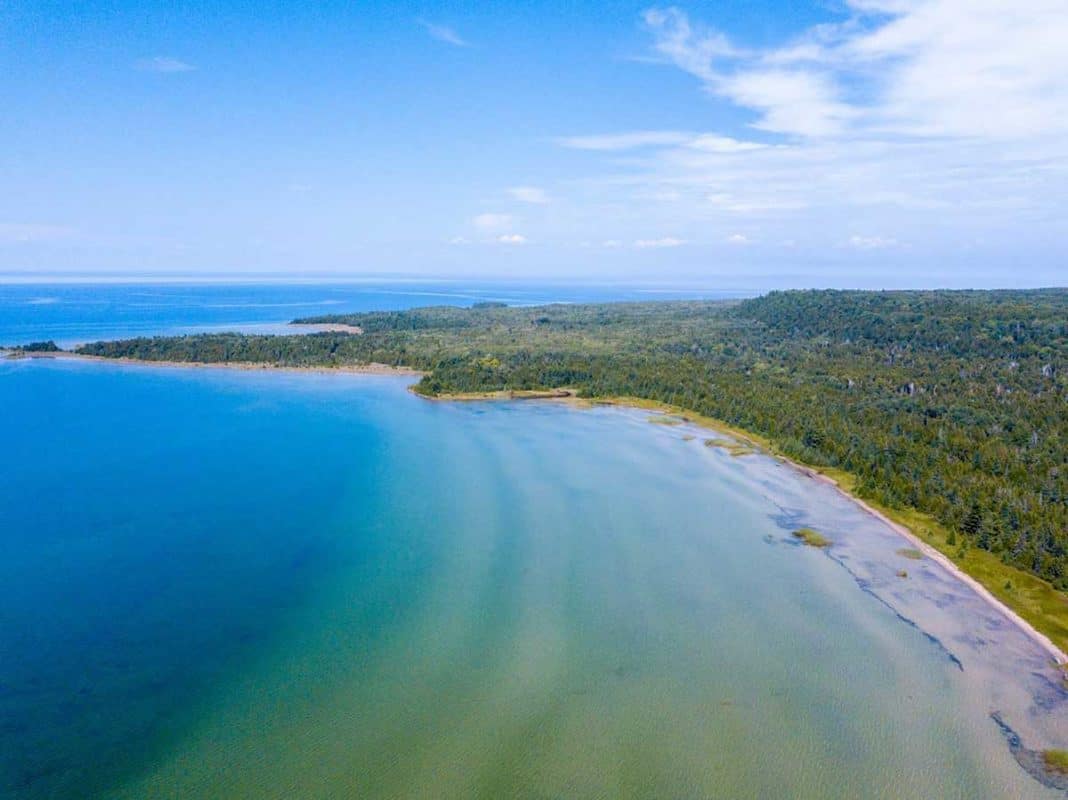VIDAL BAY – The Nature Conservancy of Canada (NCC) has raised 91 percent of its fundraising goal toward the purchase of the Vidal Bay forests and shoreline property on Western Manitoulin.
“We are inching closer and closer to our goal,” stated Pia Kaukoranta Vahabi, acting director of development and communications with NCC, when contacted by The Expositor recently. “We are on the last stretch and we are turning over every stone, and will be posting this news on Facebook and our website to let anyone who may have not heard about our plans and the purchase of the property; and who would be interested in making a donation to the fundraising campaign.”
Ms. Kaukoranta Vahabi noted, “we are at 91 percent of the funding we had hoped to raised. The initial goal was to raise $16 million. We have $1.4 million more to raise, so we have a ways to go.”
“This is one of the largest projects the NCC has taken on in Ontario to date. This is a rare opportunity to protect such a large tract of ecologically significant land,” an NCC release stated.
In acquiring the 7,608 hectares (18,800 acres) on Manitoulin Island at Vidal Bay, “when combined with nearby and adjacent conservation lands that we have already conserved, this will become a protected area complex of 250 square kilometres (24,860 hectares/61,435 acres), the largest of its kind south of the Canadian shield in Ontario. It will help us protect and care for the Vidal Bay forests and shoreline forever,” the release continues.
“The Vidal Bay forestry and shoreline property features coastal cliffs, undeveloped Lake Huron shorelines, inland lakes and wetlands, intact forests and alvars. Protecting large swaths of high-quality habitat is essential for the ongoing survival of the millions of migratory birds that visit from southern Ontario every spring and fall. The wetlands and shoreline are important habitat for breeding and migrating waterfowl, including ducks, loons and grebes,” the NCC notes.
“Manitoulin Island is and always has been a priority for conservation for its undeveloped Great Lakes shorelines, globally rare alvars and meadow marsh. The Island is home to globally rare and at-risk plants, such as Lakeside Daisy, Hill’s thistle, as well as the endangered mottled duskywing butterfly. It plays host to at-risk bird and reptiles and supports healthy populations of white-tailed deer, black bear and gray wolf,” the release says.
“But the Island faces many challenges. Each year, the quiet beaches, soaring and clear turquoise water bring more people to visit Manitoulin Island. Ever growing development pressures for cottages and second homes pose a significant threat and, like most Great Lake shorelines, the opportunities for conservation have become few and far between,” the release continues.
“When it comes to conserving Canada’s most important natural areas, buying land is just the beginning. Stewardship managing the land for the long term is at the heart of what we do. Every property we protect is monitored and managed so that the ecosystems are maintained and species thrive, even if that means leaving it be,” the release adds.
“We’re doing what we can in the meantime, before we officially complete the fundraising campaign and get on the property,” said Ms. Kaukoranta Vahabi. “Our biologists are itching to be able to do the baseline work needed. We hope to be able to get people on the property soon and have consultations with community members and First Nations. “We are getting closer.”




